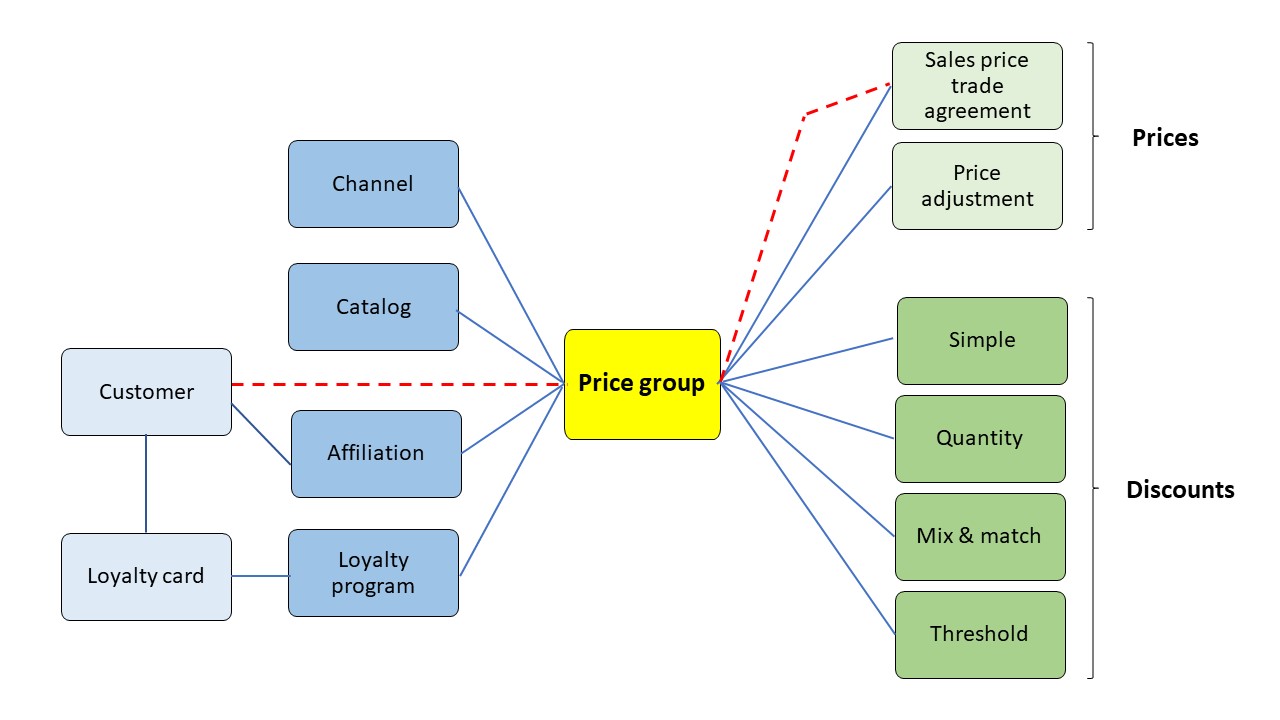Retail price groups
Retail price groups are used to link the sales price components with the discounts to different entities such as channels, catalogs, customer affiliations, loyalty programs, and groups of customers.
The following illustration shows how price groups are used.

In this illustration, notice that Price group is at the center of pricing and discount management. The Commerce entities that you can use to manage differential prices and discounts are on the left, and the actual price and discount records are on the right.
When you create price groups, you should not use one price group for multiple types of Commerce entities. Otherwise, determining why a specific price or discount is being applied to a transaction can be difficult.
As the red dashed line in the image shows, Commerce supports the core Dynamics 365 functionality of a price group that is set directly on a customer. However, in this case, you will only get sales price trade agreements. If you want to apply customer-specific prices, we recommend that you not set price groups directly on the customer. Instead, use affiliations.
If the price group is set on the customer, then this price group will be associated with the sales order header of the orders that are created for this customer. If the user changes the price group on the order header, then the old price group is replaced with the new price group but only for the current order.
For example, the old price group will not affect the current order, but it will still be associated with the customer for future orders.